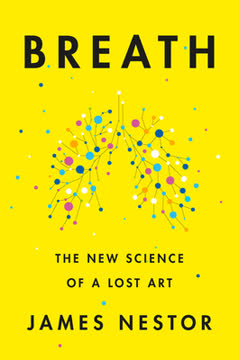Key Takeaways
1. Leadership embodiment practices enhance presence and effectiveness
"When we Center, you are never alone. In Center, you have: a big picture point of view, access to collective intelligence and interconnection, and your posse is always there—all of this is ready to energize and support you in advancing your intention while reminding you that—we are all in this together."
Centered leadership involves cultivating a state of being that is open, expansive, and grounded. This allows leaders to access their innate wisdom, compassion, and confidence. Leadership Embodiment (LE) techniques focus on:
- Shifting posture to influence mindset and behavior
- Expanding personal space to create inclusiveness
- Developing awareness of stress reactions and patterns
By practicing centering regularly, leaders can:
- Respond skillfully to challenges rather than reacting habitually
- Create an atmosphere of trust and collaboration
- Access creative solutions and big-picture thinking
2. Centered listening cultivates inclusiveness and understanding
"When using Centered Listening, attention is focused on inviting the words and content to land on the table or in the space in front of you, between the speaker and listener."
Centered Listening involves receiving information without taking it personally or becoming defensive. This practice helps leaders:
- Create a supportive atmosphere for open communication
- Process difficult feedback more effectively
- Understand the whole message, including non-verbal cues
Key aspects of Centered Listening include:
- Expanding personal space to include the speaker
- Allowing information to "land" in the space between, rather than internalizing it
- Maintaining an open and curious mindset
By mastering this skill, leaders can foster trust, encourage diverse perspectives, and make more informed decisions.
3. Speaking up with authenticity requires alignment of mind, body, and intention
"To be an effective leader, you must be more than an expert. When you lead from Center, you become an Alchemist."
Authentic communication involves aligning one's thoughts, emotions, and physical presence. When speaking up, leaders should:
- Shape personal space into a "wedge" to support intentional communication
- Unify head, heart, and core to convey congruence
- Draw inspiration from internal and external sources
LE techniques for powerful speaking include:
- Creating clear and concise declarations
- Practicing receiving support and inspiration
- Using body posture to enhance message delivery
By embodying their message, leaders can inspire action, build trust, and effectively navigate challenging conversations.
4. Stress reactions stem from evolutionary instincts and learned patterns
"We are living in a time of instability, possibility, and change in all aspects of our lives. What will happen and what the future holds is anyone's guess. Leaders need to be smart, intuitive, creative, and most importantly, they need to be able adjust to changing situations."
Human behavior is primarily driven by unconscious processes rooted in:
- Instinctual patterns encoded in our DNA
- Learned patterns acquired through life experiences
- Volitional responses generated by conscious thought
Our evolutionary history as social animals has shaped our instincts around:
- Status and hierarchy
- Inclusion and exclusion
- Conformity to group norms
- Stress responses to perceived threats
Recognizing these deep-seated patterns allows leaders to:
- Understand their own reactions and those of others
- Develop strategies to manage instinctual responses
- Create environments that support collaboration and innovation
5. The brain operates on three levels: neocortex, limbic, and reptilian
"The human brain consists of many highly networked areas and structures. While we rely on every part of our brain in order to function, certain areas are crucial to the behaviors that we judge to be most highly evolved."
Brain structure influences behavior and decision-making:
- Neocortex: Higher-level thinking, reasoning, and future-oriented planning
- Limbic system: Emotional processing and memory formation
- Reptilian region: Basic survival instincts and autonomic functions
Key aspects of brain function relevant to leadership:
- Prefrontal cortex (part of neocortex) governs executive functions
- Limbic system processes emotions and social cues
- Reptilian brain activates fight, flight, or freeze responses
Understanding these brain levels helps leaders:
- Recognize when stress is impacting cognitive function
- Develop strategies to engage higher-level thinking
- Create environments that support optimal brain function for themselves and their teams
6. Amygdala hijacks can override rational thinking in stressful situations
"Once in the grip of a hijack, we can't easily stop it. The reptilian brain is in control. It often causes us to do things we regret or are embarrassed by later."
Amygdala hijacks occur when the threat response overrides higher brain functions:
- Amygdala processes emotional intensity of stimuli
- High perceived threat activates fight, flight, or freeze responses
- Rational thinking becomes impaired during hijacks
Strategies to manage amygdala hijacks:
- Increase prefrontal cortex functioning through self-care and mindfulness
- Develop awareness of personal triggers and early warning signs
- Practice somatic techniques to intercept the hijack process
By recognizing and managing these reactions, leaders can:
- Maintain composure in high-stress situations
- Make better decisions under pressure
- Model emotional regulation for their teams
7. Change requires somatic learning, not just intellectual understanding
"Just understanding and buying into the rationale, however, does little to alter the patterns that drive behavior. When we cognitively vow to react to a trigger differently next time, we rarely do."
Effective change involves rewiring neural patterns through embodied experience:
- Cognitive understanding alone is insufficient for behavioral change
- Deeply ingrained patterns require somatic (body-based) learning
- Repeated practice of new behaviors creates new neural pathways
Leadership Embodiment practices facilitate change by:
- Providing embodied experiences of centered states
- Training somatic awareness to catch patterns early
- Offering techniques to shift reactive patterns in the moment
By engaging in regular LE practice, leaders can:
- Develop new, more effective behavioral responses
- Increase their capacity to handle stress and complexity
- Cultivate a more authentic and impactful leadership presence
Last updated:
Review Summary
Leadership Embodiment by Wendy Palmer explores body exercises for confidence and presence. Readers appreciate its unique approach combining Aikido principles with scientific evidence. The book is praised for its practical tools and balance of Eastern philosophy and biology. Some find it shallow, viewing it as a course promotion. Others value its insights on centeredness, personal space, and overcoming reactive patterns. While the scientific section is less engaging, many readers find the concepts applicable beyond leadership, benefiting anyone seeking to improve communication and presence.
Similar Books






Download PDF
Download EPUB
.epub digital book format is ideal for reading ebooks on phones, tablets, and e-readers.




